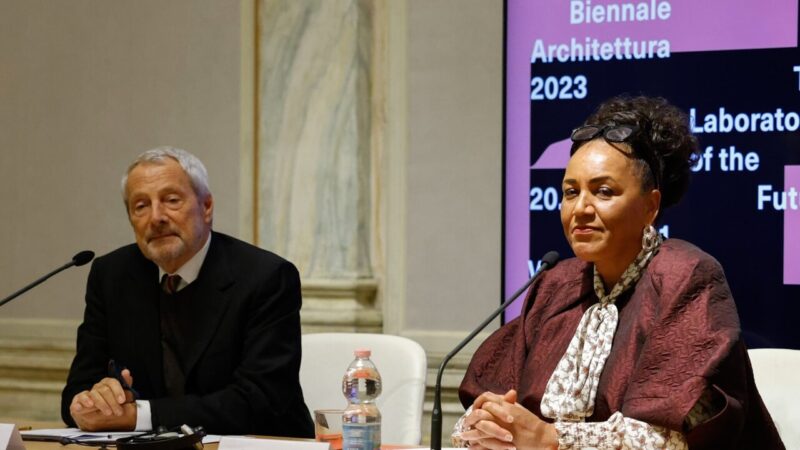The 18th. International Architecture Exhibition imagines a better and more sustainable world
The Architecture Biennale 2023, which opens its doors to the public from May 20 until November 26 in Venice, was presented one week ago. The Laboratory of the Future is the title of the 18th International Architecture Exhibition, directed by Lesley Lokko, an architect, lecturer, writer and curator and the first African woman to head the event dedicated to architecture in Venice.
Decolonization and Decarbonization will be the main themes: great attention will be paid to climate change and the promotion of a more sustainable model for the design, staging and conduct of all its activities. Having obtained in 2022 the certification of carbon neutrality for all its events held during the year, the Architecture Biennale 2023 will be the first major Exhibition to field test a path to achieve carbon neutrality.
Participants will not be called architects but “practitioners”: Lokko, heralds a shift that starts with terminology, ideas, and visions rooted in his home continent. “The Laboratory of the Future,” Lokko explained, “is an exhibition divided into six parts. It includes 89 participants, more than half of whom are from Africa or the African diaspora. The gender balance is equal and the average age of participants is 43, while it drops to 37 in the Curator’s Special Projects section, where the youngest is 24. Forty-six percent of the participants consider training as a real professional activity, and for the first time ever, almost half of the participants are from individually-run studios or composed of up to five people. In all sections of the Exhibition, more than 70 percent of the exhibits were designed by studios run by an individual or a very small team,” he continued, “at the heart of every project is the prince and decisive tool: imagination. It is impossible to build a better world if you don’t imagine it first.”
The Laboratory of the Future begins in the Central Pavilion at the Giardini, where 16 studies representing a distillation of Force Majeure (Major Force) of African and diasporic architectural production have been brought together. It then moves to the Arsenale complex, with the Dangerous Liaisons section – also present at Forte Marghera in Mestre – flanked by the Curator’s Special Projects, which for the first time is as broad a category as the others. Both spaces feature works by young African and diasporic “practitioners,” the Guests from the Future, whose work directly confronts the two themes of the Exhibition, decolonization and decarbonization, providing a snapshot of future practices and ways of seeing and being in the world. “We chose to qualify participants as ‘practitioners’ and not as ‘architects,’ ‘urban planners,’ ‘designers,’ ‘landscape architects,’ ‘engineers,’ or ‘academics,'” to fully reflect the African situation, a world in rapid hybridization that requires a different and broader understanding of the term “architect.”



